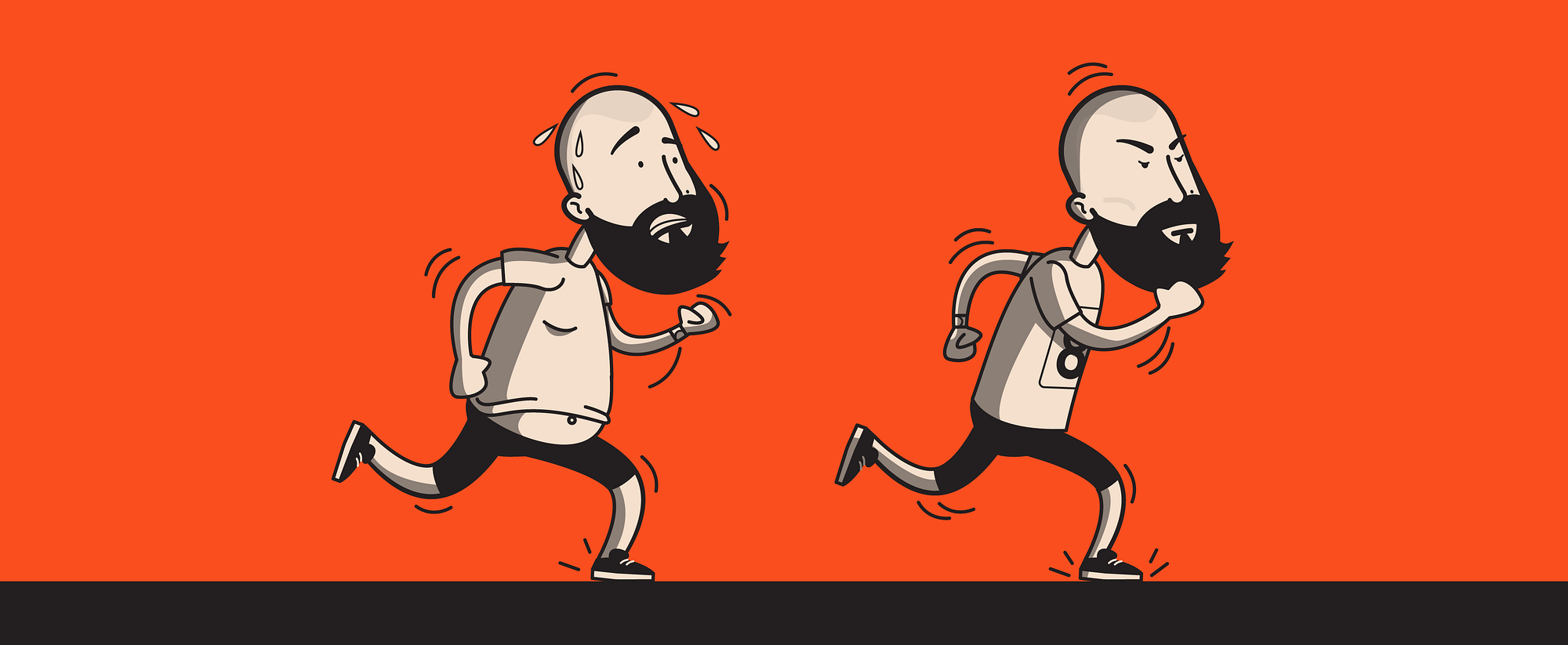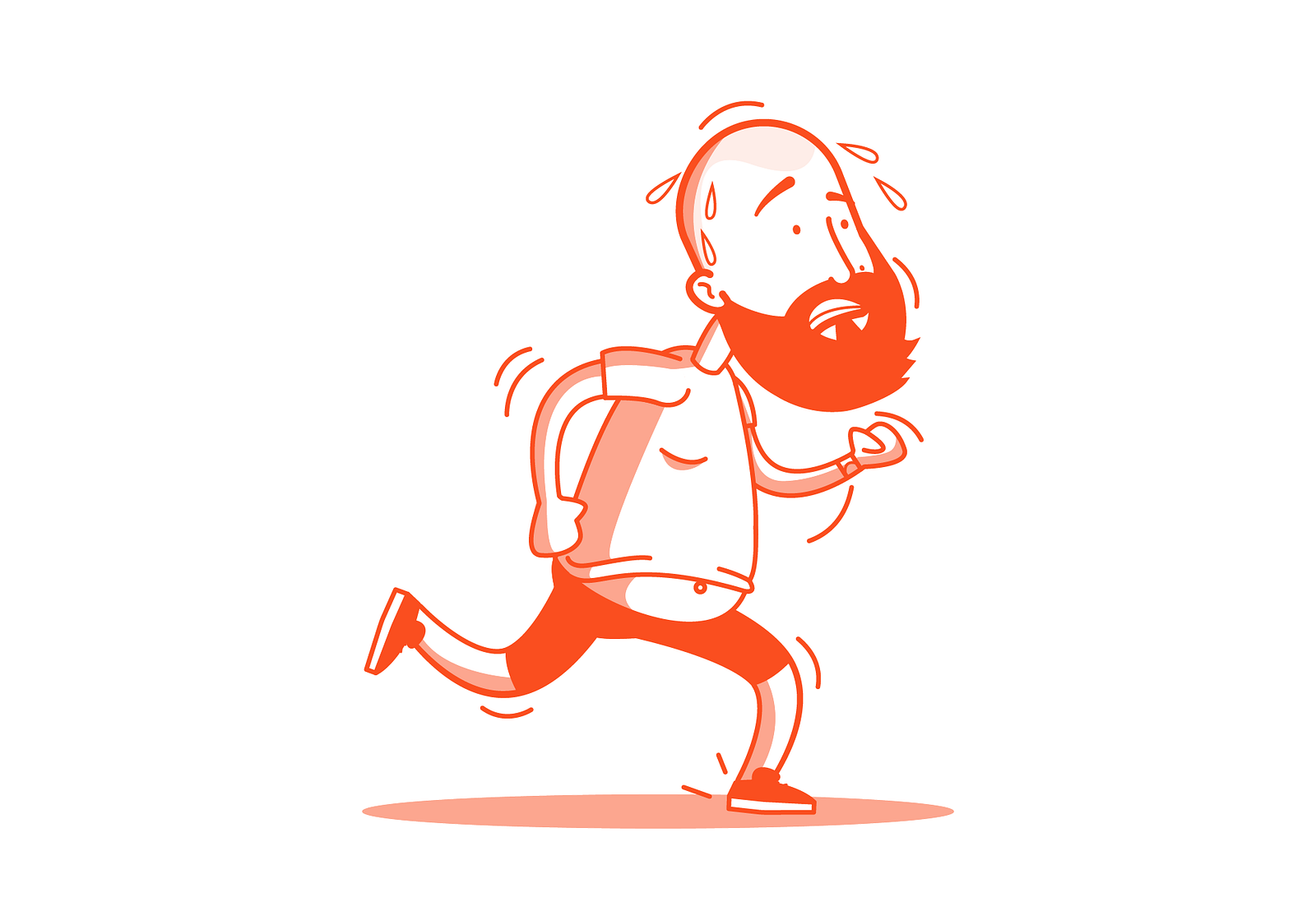Build Design Systems With Penpot Components
Penpot's new component system for building scalable design systems, emphasizing designer-developer collaboration.

medium bookmark / Raindrop.io |
Design lover & Problem solver. Working as Sr. Visual Designer @TomTom

Good UX is far from being just about how something looks. Instead, it’s a combination of a series of disciplines, like user research, interaction, motion and visual design.
What these disciplines all have in common is the user as the main focus. The result of good UX is a user who perceives the experience as positive, easy, useful, and efficient.
So how is this related to weight loss? Believe it or not, understanding basic UX fundamentals was something that helped me go from 222 lbs to 167 lbs (from 101kg to 76kg) in just a few months.
First, some context: I was overweight most of my life. But the big shift happened in 2015 when when I was shopping for clothes and nothing fit me properly. Instead of the usual reaction — i.e. feeling sorry for myself — I decided to do something about it.
This is where UX design comes into the picture.
The steps that define the UX Design process will be different depending on who you ask, but here is my interpretation:
1. Understand
2. Define
3. Design
4. Test
5. Implement
6. Analyze, Learn & Repeat
Following the UX process was the ultimate tool that helped me lose weight.
In this first phase, designers try to identify the problem and fully understand it. To do this, they need to empathize with the user, which in turn starts with user research.
User research can be done in many ways — reading user feedback, sending out surveys, or interviewing and observing users.
With the data that comes out of the user research, designers sometimes create user profiles, referred to as “personas.” These are basically fictional representations of the real user, their motivations, goals, needs, and expectations. This helps designers remember who they’re designing for.
Designers also try to do some benchmarking at this phase. Someone may already be trying to solve the same problem and there’s a lot that can be learned from them.
With this in mind, the first step in my weight loss journey was to buy a scale. I needed to have a concrete visualization of what was happening and also have a full understanding of the problem.
So, on October 30, 2015, I truly began to understand the problem that I needed to solve: I was 220+ lbs (101kg)— which was quite a lot for my height (5 ft 10 in (180cm)). I needed to lose at least 45 lbs(20kg).
I knew my user better than anyone else, so the next step was straightforward. My user was someone who liked to eat, who hated wasting time, and enjoyed a bit of competition.
Also, by analyzing my past experiences alongside some Internet research, I came to understand that the hardest part would not be losing the weight, but maintaining the weight loss once I got there.
In this phase, designers use the insights that they’ve gathered from users to create “user stories.” These are high-level definitions of features, usually boiled down to a single sentence, of a user’s goal and the motivation behind it.
It usually follows a template like this:
As a [type of user], I want to [goal] so I can [reason].
In my case, I knew that my user’s needs would change along the way. I considered the following three user stories:
“As an overweight person, I want to lose weight so I can feel better about myself.”
“As a person losing weight, I want to eat things that I like so I don’t feel miserable.”
“As a person who has reached his desired weight, I want to be able to maintain it so I can feel good about myself.”
In this phase, I tried to come up with solutions for the problem that I had in hand, without forgetting who I was “designing” for. However, instead of sketching or wire-framing, I was creating an environment that would help me achieve my goals.
Taking my three user stories into account, I had to design a system that would allow me to eat the things that I liked, that didn’t feel like a waste of time, and also felt a bit like a game.
If you’re looking for a secret easy formula to lose weight, you won’t find it here. Losing weight is all about basic math, you “just” need to burn more calories than you consume. That doesn’t necessarily mean that you have to eat less, but it does mean that at the end of each day, you need to have a negative net calorie intake. Basically, there’s no easy solution.
I devised a very simple plan that I dubbed “Track & Burn.”
For this part of the system, I used an app called Lifesum. I needed to track my caloric intake. Knowing my user, I needed a system that would make this process easy and non-time consuming. With Lifesum, I could save the food that I ate often, search for specific products, and even scan bar codes from products that I bought in the supermarket.
Lifesum tells you how many calories you can eat after taking into account the calories that you’ve burned. It turns red when you eat more than you should. This makes the process feel a little like a game. I wanted to see a green graph at the end of each day.

But I also knew that in order to stick with the diet, I had to keep eating things that I liked, even if in smaller portions. This is where the second part of my plan comes in.
In order to make up for the extra eating, I decided to stop being lazy and start exercising.
Knowing my user, I knew that I had to go for something with the most value and least number of hurdles possible. It had to be:
I decided that going to the gym wasn’t a fit for my user. Here’s why:
After analyzing my options, I decided my best option was to start running. Here’s why:
However, there was still the problem of the city I lived in. I didn’t really want to run in the rain. So, I bought a treadmill.

This solved my problem with the weather and made running extra convenient for me. I had no excuses.
Also, the treadmill counts calories, so I could easily figure out how much and how fast I needed to run.
Finally, to help me understand how much exercise I had to do, I also bought a Fitbit. I really wanted all the steps I was taking throughout the day to count so I could eat a bit more.
I decided to put my design into practice and see if I needed to make any adjustments.
Thankfully, it was really easy for me to make sure that my Lifesum graph was green every day.
Because I had a treadmill at home, I could even sneak in exercise after dinner. While I was running, I could even watch my favorite show or a movie. This was, and still is, brilliant.
I bought a kitchen scale to weigh food so I could be more precise with the values. Besides helping me count calories, it helped me adjust what I ate. I was able to understand what types of food I could focus on, since some are more satisfying and less calorific than others.
In no time I started to see results. For this testing phase I was weighing myself EVERYDAY after waking up. That might sound a bit nuts, but it was the best way to keep myself engaged and motivated. The days I lost weight, I was excited and motivated. The days I gained weight, I doubled down on exercise.
After the first week, I had lost 2 lbs (1kg).
There’s no point in testing your designs to infinity. At some point you have to launch something and see how users perceive it.
So I went ahead with my plan at full force. I was losing around 2 lbs (1kg) per week. By the end of 2015, I weighed 200 lbs(92kg). By the summer of 2016, I went beyond my original goal and was down to 167 lbs(76kg)
After implementing, you shouldn’t stop improving the user experience.
You need to analyze your users’ behavior, learn from it, and iterate.
The key iteration in my plan was an app called Strava. Strava logs all my runs, and my TomTom watch syncs with my phone and inputs everything into the Lifesum app. With the help of Strava, running stopped being about losing weight and became a passion instead.

Crucially, Strava gave me the ability to compare myself with my friends and others. That added a little competition in the mix and made me want to become faster and run longer distances.
Over time, my diet also became healthier, which helps when I’m feeling too lazy to run.
I’ve now almost achieved all the goals I set for myself in 2017. I wanted to run at least 2000km (1100+ miles) (almost there); I want to do at least 12 half marathons (almost there too); and I wanted to run a marathon, which I ran today.
If you happen to be runner, you can find me on Strava, and if you’re near me, hit me up and let’s go for a run.
In short, these are the steps that I took:
Doing this was only possible because there I really understood my user and never stopped trying to improve my experience.
This is basically what UX designers are hired to do.
And now, the thing that you’re wondering about…

The “mandatory” before & after.
Inspired by the power of UX? Enroll into our UX Design course. Learn about the entire UX process and prepare to get a job in UX.
Springboard is an online school that helps professionals master 21st century skills like UX design, data science, and business analytics through mentor-led courses.
AI-driven updates, curated by humans and hand-edited for the Prototypr community